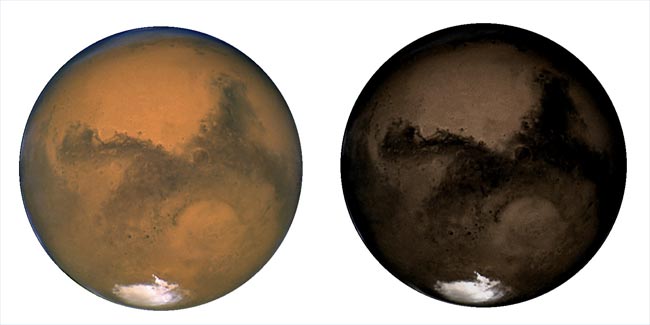How Mars Turned Red: Surprising New Theory

Mars was not always red, according to a new theory for how the planet took on its characteristic ruddy hue.
Until recently, Mars' color
"That was a surprise to everybody," said Jonathan
Now new research has found a possible mechanism to explain
In the lab
To test the idea, Merrison and colleagues sealed samples of
The scientists then added powdered magnetite, an iron oxide
Get the Space.com Newsletter
Breaking space news, the latest updates on rocket launches, skywatching events and more!
As the researchers continued to tumble the samples, they
"We think we have a process that explains how the dust
As the sand grains turned over in the flasks and hit each
Hematite is an iron oxide that is deep red in color. It only
"When we finished we could see red stuff on the side of
Same on Mars?
Though they can't yet prove that this is what happened on
In fact, since the process can occur relatively quickly, it
"I think it means that Mars wasn't always red,"
Merrison presented the results last week at the European
Join our Space Forums to keep talking space on the latest missions, night sky and more! And if you have a news tip, correction or comment, let us know at: community@space.com.

Clara Moskowitz is a science and space writer who joined the Space.com team in 2008 and served as Assistant Managing Editor from 2011 to 2013. Clara has a bachelor's degree in astronomy and physics from Wesleyan University, and a graduate certificate in science writing from the University of California, Santa Cruz. She covers everything from astronomy to human spaceflight and once aced a NASTAR suborbital spaceflight training program for space missions. Clara is currently Associate Editor of Scientific American. To see her latest project is, follow Clara on Twitter.








